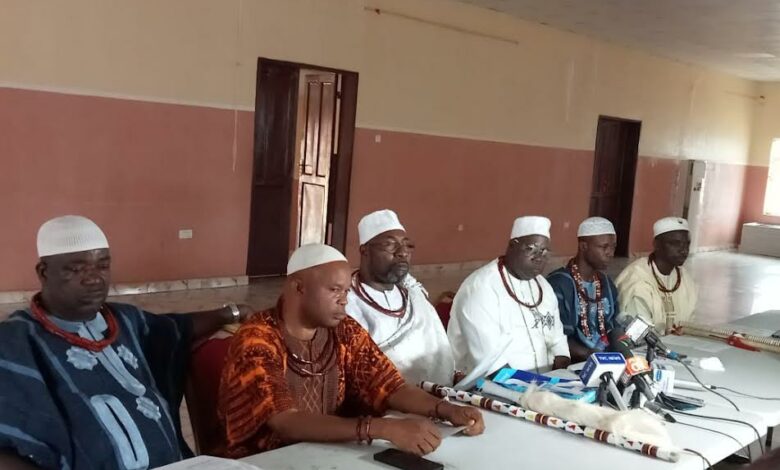The National Arts Theatre, built for the preservation, presentation and promotion of arts and culture in Nigeria, first opened its doors to world acclaim during the Second World Black and African Festival of Arts and Culture (FESTAC ‘77) held in Lagos, Nigeria in 1977.
It signalled a flourish in the growth of Nigeria’s arts and culture with diverse entertainers, artists and actors flocking the edifice to showcase their works and talents.
During those times, every nook and cranny of the edifice was a beehive of activities from theatre and poetry performances, to dances and art exhibitions.
However, in the last four decades, the image of the National Arts Theatre that crossed the minds of majority of Nigerians, who witnessed the monument’s glory days, was of some abandoned building which may never be at the epicenter of Nigeria’s entertainment scene again.
Interestingly, the narrative has changed with the emergence of the Bankers’ Committee comprising all the banks in the country, who with the wave of a hand, breathed life into the walls of the historic building, restoring its enviable stature as a beacon of hope and creativity
In 2021, the renovation of the National Arts Theatre was handed over to the Bankers’ Committee, following approval by the Federal Government.
Today, the national edifice has been restored to its glory in opulence and functionality of state-of-the-art facilities that could be described as the rebirth of a national monument.
Speaking at the handover ceremony, the late Mr. Herbert Wigwe, Former Group Chief CEO, Access Holdings Plc stated that, “The National Theatre, whether you believe it or not, is one of the greatest and most iconic buildings anywhere in the world and all we need to do is to lift it up and restore it to world class standards.
“This will help to provide employment to millions of Nigerians over the years, apart from those who are involved in the construction. Think of the creative people and what it means from the skills and enhancement standpoint”
The Bankers’ Committee’s Midas touch can be felt all over the architectural masterpiece with state-ofthe-art renovation works covering different spaces including the 4,000-seater main bowl, over 3,000seater banquet hall, exhibition halls, cinemas, VIP spaces, actors’ changing rooms, industrial kitchen, over 300 new toilet cubicles, clinic, fire station, lobbies within the four entrances and extensive roof repairs.
Also, the upgrading of the entire Heating, Ventilation and Air Conditioning (HVAC) system, power, water supply and sewage systems to match the world-class theatres. The interior is not left out with Audio Video Lighting (AVL), world stage engineering system, 17 lifts including dumb waiters, solar power, new furniture and restoration of artworks including those on the internal wall panels and the building façade.
It also extends to the exterior parts with the refurbishment of the three entrance gatehouses, construction of four themed landscapes, car park block that can accommodate 250 cars, the ring road, and installation of external street lighting and CCTV cameras.
Mr Ade Laoye, Principal Consultant, ECAD Architects, Architects for the National Theatre restoration project while speaking on the restoration noted that, “…We have had to inspect the actual historical adornments and refurbish and renovate where needed.
“We have been limited in our physical and structural amendments, as there were some things that we couldn’t do away with. We couldn’t change the shape; it’s become iconic and timeless. People do not know that the roof is actually a tensile fabric roof, it’s not concrete, so we had to create an internal structural steel frame, within the main bowl, to carry all the modern equipment like stage engineering, back drops and even people.
“There are brand new elements and there are old elements, so we have been able to work together and knit a wonderful patchwork.
Advertisement
“The main thing for all of us has been the passion, because we all know the building after so many years of restoration work. So, it has let us for the first time show Nigerians that we can restore, renovate, refurbish and add modern things to an existing monument”.
In ensuring that the restoration of the National Theatre was done to world class standards, the Bankers’ Committee engaged the best contractors and consultants in the global construction sector to provide expertise in its implementation. Renowned Contactors include Cappa and D’Alberto Ltd as the Main/Civil Contractor, VACC Technical Ltd as Mechanical Contractor, Nairda Ltd as Electrical Contractor and Charvet Nigeria Ltd as Ring Road & Car Park Civil Contractor.
Notable Consultants who played important roles in the successful restoration and refurbishment of this national monument include: Lateral Design Concepts and Alitheia Capital Real Estates as Project Managers; ECAD Architects as Architects; Morgan Omonitan and Abe as Civil / Structural Engineers; CA Consultants as Mechanical & Electrical Consultants; Du-franc & Partners as Quantity Surveyors; SMO Contemporary Art as Artwork restoration/ curator; Desmus Mimarlik Ticaret A.Ş Turkey, SI.SA, Y&T Designs as Interior Designers/Specialist Light & Sound Consultants.
The National Gallery of Modern Art held art exhibitions which featured the beautiful works of Abayomi Barber, Bruce Onobrakpeya, Yusuf Grillo, Sina Yussuf, Irein Wangbonje among other notable artistes of that period.
The main bowl was a hub of entertainment too with the theatre performances by various theatre groups of works by leading playwrights of the day such as Wole Soyinka, Femi Osofisan, Ola Rotimi, Zulu Sofola, J P Clark, Hubert Ogunde among others.
The music scene was also bursting as international superstars of the period performed at the theatre, among them were Mariam Makeba, Stevie Wonder, Ipi Ntombi, Osibisa, Mighty Sparrow, even American artistes such as Skyy, Shalamar, Musical Youth, Brothers Johnson, Dynasty, Kool and the gang and many more.
Just as the excitement was growing and Nigeria’s emergence as the hub of Africa’s entertainment was gaining relevance, things had started going awry at the National Arts Theatre.
The monument was suffering mismanagement, lack of maintenance and underfunding.
The once glorious edifice was slowly becoming a shadow of itself with cracks, leaky roofs and power outages.
It got worse over the years, despite efforts by the management to keep it running.
Its deplorable situation was captured by Professor Sunday Ododo, who served as the General Manager/CEO of the National Arts Theatre from 2020 to 2024.
According to him, “Barely a week after assumption of office, I did a comprehensive tour of the internal facilities in the edifice. We started at 8am and it took us 2pm to come out of the edifice. I wept because it’s an edifice; a bowel of riches but underutilised because of failing functionality of the installed facilities. The air conditioners were no longer functional and the lifting system no longer working. One could see visible cracks on the floor and the cooling system not working.”
At this state, the National Arts Theatre would need a Midas touch to bring it back to life. It was concluded that it will require a public-private partnership because of the huge funding required.
The Banker’s Committee rose to the challenge by deciding to take up this herculean task through SANEF Creatives Limited, a company owned by the banks in Nigeria and charged with the Restoration and Renovation of the iconic National Theatre.
The restoration of the National Arts Theatre marks the beginning of a new era in the renaissance of Nigeria’s creative industry. It will serve beyond theatrical performances, becoming a world-class event centre and cultural zone.
As much as we will laud this Midas touch of the Bankers’ Committee along with the prospects that are in it for the burgeoning youth population, one or two leaves should be taken from the book of the past which saw the deterioration of the edifice. In other words, all hands must be on deck to ensure that this project is not left to rot with the appointment of a top-notch facility management company.











